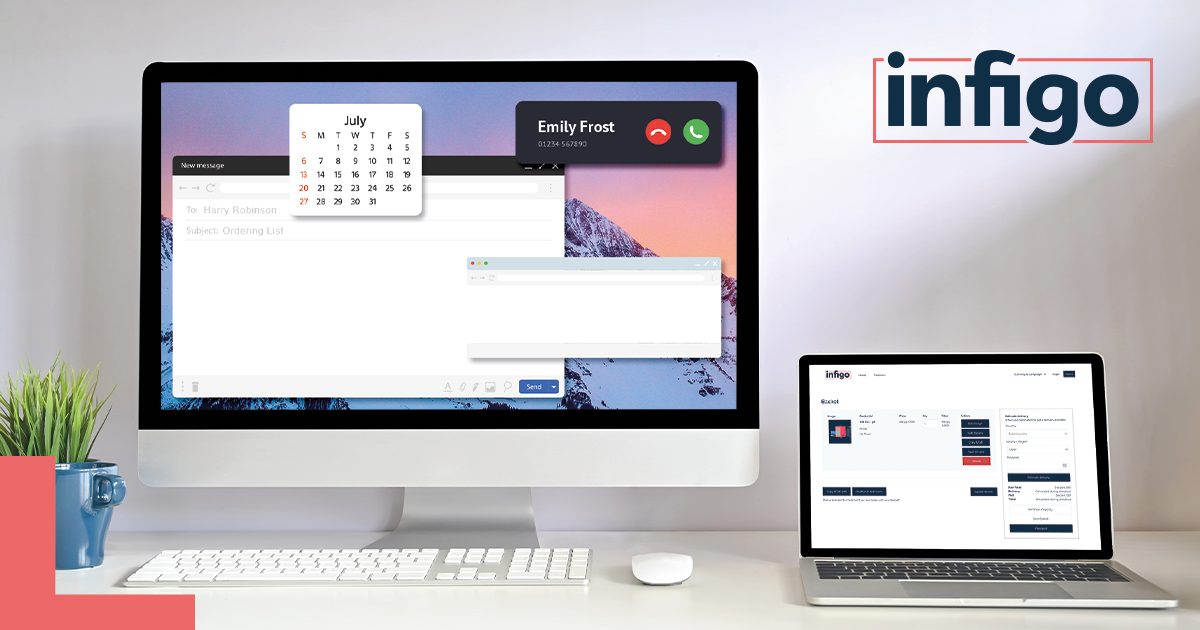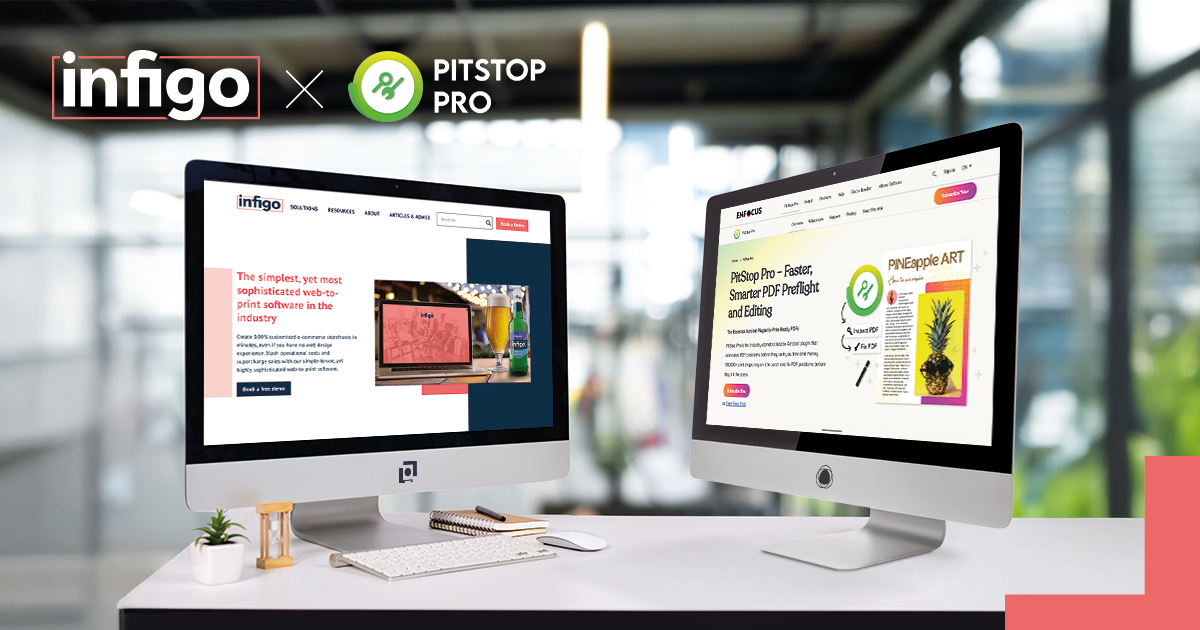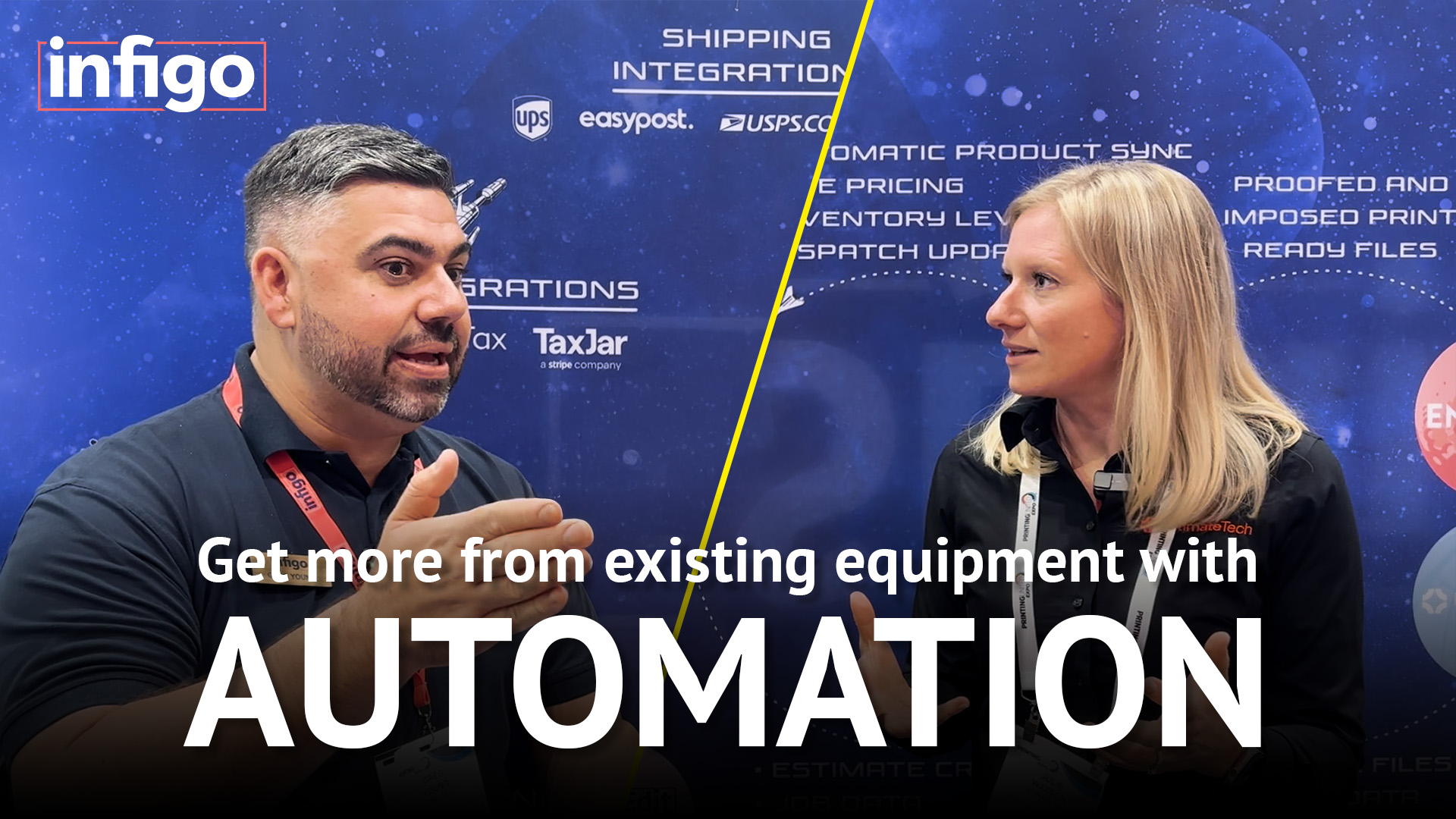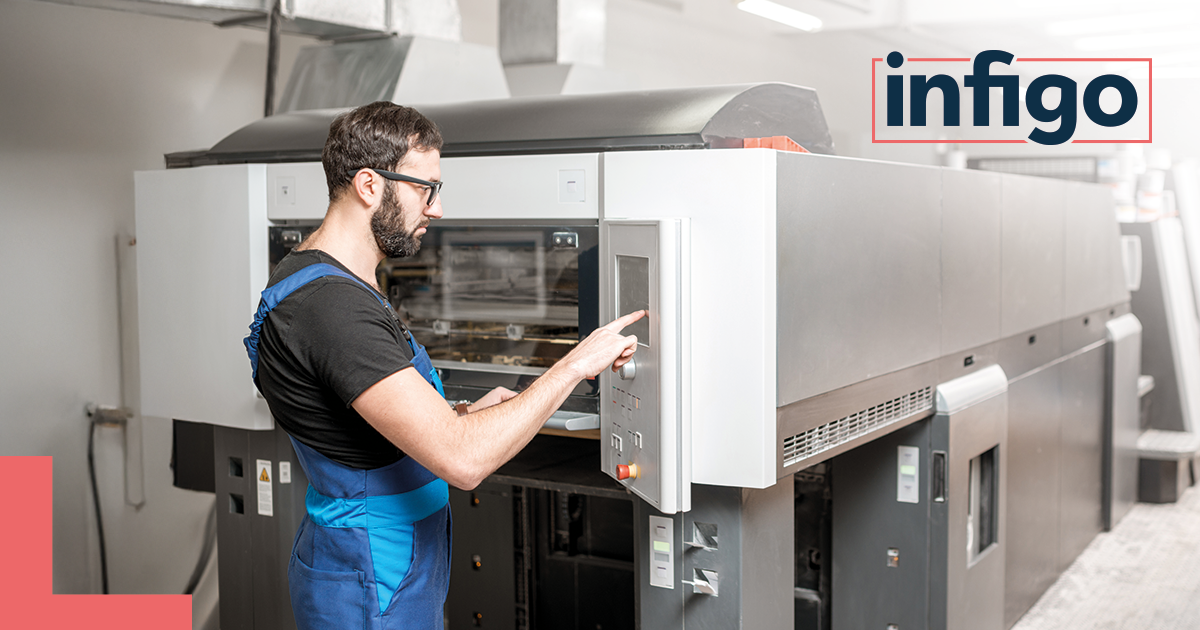In today’s world of print and packaging, the concept of ‘ecommerce’ usually takes the audiences mind to polished, well thought out B2C websites. You know, the 5 or 6 that everyone is aware of, and many aspire to be just like. Often designed with vibrant, eye-catching visuals and created with the impulse purchase in mind. The user journey has been wireframed, built, tried and tested. The marketing campaigns aligned to ensure a harmonious offering between attraction and action.
But in the B2B storefront space, the conversation about digital transformation typically overlooks the storefront technology and heads straight off to the workflow automation, the MIS integration or even the setup and onboarding of new print production technology. Yet, the simple B2B storefront could well be the missing piece of that jigsaw when it comes to delivering a seamless and scalable solution that drives the numbers straight onto your bottom line.
Years of experience has shown us that businesses that fail to fully embrace their B2B storefronts, limit their capacity for growth, their efficiency, their customer satisfaction. And ultimately, their potential.
Traditional Print Ordering vs. B2B Storefronts
The year is 2025. A year where AI has taken revolutionary leaps forward, empowering average Joes to become wizards in their own rights. Where technology is moving faster than it’s ever done before. Where organisations all around the world are looking at ways to make their business more efficient. More scalable. More profitable. Yet, a large percentage of Print Service Providers (PSPs) still operate a largely manual or semi-automated environment for B2B selling.
Clients sending files over email. Orders being placed over the phone. Countless revisions to artwork after failed, manual approvals. The reliance on an account manager to ensure they’ve passed on the right files, data lists, print specification, to ensure the job makes it through production on time and to ensure that it’s delivered to the correct location. Unfortunately, these scenarios are not a thing of the past but instead, a present-day realisation for many providers. For a large proportion account managers, they feel that this way of working assists their long-term client relationships. This model feels like it still works… until one day it doesn’t.
Here’s the reality:
Manual order submission consumes internal resources and is prone to error
Pricing inconsistencies are common due to outdated, locally saved pricelists
Approval delays are common, with sign off sitting in people’s inboxes
It’s difficult to scale the model efficiently without hiring more and more staff
Customers are denied visibility into real-time order statuses, pricing, or product availability
This is where a powerful (yet often simple) B2B storefront can completely transform the game for you and your business.
But what is a B2B storefront?
At the very core, it’s a web-based portal, often personalised with your clients’ branding, where they can log in, browse an approved catalogue of products, submit new orders, track existing ones and manage their print needs. All in one online location, but accessible anytime and anywhere.
Unlike its B2C counterpart, which in most cases is open to the public, and set up in a way to be discovered, a B2B storefront typically is:
- Private: Access is limited to authorised users
- Customised: Product catalogues, pricing, templates, and workflows are customised for each client based on their individual needs.
- Integrated: Often connected with an MIS or production workflow platform for end-to-end automation
- Contractually defined: Products, SLAs, and approvals are often configured based upon by pre-agreed commercial agreements.
In other words, this is not “a website” per se, but instead, it’s a digital extension of your client relationship.
Why Are B2B Storefronts So Often Overlooked?
So, the big question is, why do so many print businesses fail to invest in their B2B storefronts and provide the attention they deserve?
- “If it ain’t broke…”
A lot of the time, the typical prompt to roll out a storefront for a client, is because they ask you for one. But waiting until they do puts you on the back foot when competitors offer more digital flexibility, and storefronts are part of the default offering. - Underestimating the complexity (and value)
B2B storefronts aren’t cookie cutter sites (although this may be slightly contradictory, when I say they CAN be… but within reason). They require a platform that can adapt to the specific needs of each client whether that’s custom pricing, user permissions to grant access to specific products or parts of the system, product templates, or approval workflows amongst others. But this complexity is exactly what makes them valuable. - A lack of internal ownership
Quite often, no single team owns the storefront. Marketing sees it as a sales tool, operations see it as an IT project, and sales see it as optional. Without clear ownership, these projects stall, or worse yet; they launch and slowly fade away into the background with everyone scratching their heads as to why they’ve just invested in it. - Fear of customer resistance
A regular, and ongoing assumption is that that clients prefer the ‘personal touch’ of manual ordering. But what they really want in this fast-paced digital world is convenience, speed, and accuracy. It means your team are then freed up and available for the real value-add and big-ticket items, not the monotonous, laborious and profit-zapping admin.
Unlocking B2B Storefront Potential
When delivered properly, B2B storefronts unlock significant benefits across almost every department within the PSP.
1. Sales & Revenue Growth
- Speedy onboarding: Launching new client portals takes days or weeks, not months.
- Expansion Revenue opportunities: Present optional extras and complementary products at point of order by utilising upsell and cross sell functionality.
- Uncover new revenue streams: Enable decentralised ordering across franchises, branches, or departments. In turn, print spend increases as wider product ranges are explored.
2. Operational Efficiency
- Automated workflows: Orders flow directly into production, with a digital job ticket meaning fewer errors from manual input, and from-order-to-press times that are unrivalled.
- Pre-approved assets: Branded guidelines are enforced and adhered to, to ensure that templates are setup correctly from the get-go reducing the back-and-forth and avoiding production delays
- Scalability: More clients, more orders, same number of employees!
3. Customer Experience
- Self-service: Clients can order what they need, when they need it from any device (well, maybe not a Nokia 3210 but you catch my drift) without the need for your team to be sat behind their desk waiting for the phone to ring or their inbox to ping!
- Consistency: Every location gets the right brand, right format, right finish because you’ve approved the templates, you’ve already agreed on the production specification and the same PSP is handling all the jobs on the same print device.
- Complete Visibility: Clients can view order statuses, their order history (with a quick and easy re-order process), and approvals—all in one place, accessible from their pocket.
Real-World Example: How Our Clients Are Winning with B2B Storefronts
One of Infigo’s long-term clients in the healthcare space built a bespoke B2B storefront for internal teams across hundreds of care homes all around the UK. Each home is granted access to specific materials they’re authorised to order. From outdoor signage, recruitment collateral, or event posters, with spending limits and approval workflows in place. All with location specific information dynamically populated onto the templates when the home logs in, removing any room for data input error whilst speeding up the order flow.
What once required a dedicated account manager for order taking and version control is now fully automated. In turn, it’s meant that their homes find it easier than ever before to get information in front of their occupants & their families whilst maintaining brand consistency.
In addition, the organisation has saved over £1.3m in artworking costs over a 7-year period (yes, you read that right!), removing the need for an agency to create individual pieces of artwork for every iteration of a print file based on the individual event and specific location.
Money Saved. Time Saved. Control back in the user’s hands. Every box ticked.
Why You Need a B2B Storefront Now
With increased pressure on margins, evolving customer expectations, and your competition all ‘going digital’, you can no longer afford for your storefront strategy to be an afterthought. Thanks to the likes of Amazon, consumers now have a level of expectation of pulling a device out of their pocket, quickly searching a catalogue, adding to basket and sitting back knowing that their goods will be with them shortly (and communicated via constant status updates). This is now the norm. And it should be yours, too.
Here’s why now is the time to prioritise your B2B storefront:
Remote working: Customers expect to manage their print needs digitally as opposed to the traditional offline methods
Your competitors are investing: The ones making waves in your market already have client portals in place.
Infigo makes it easier than ever: With features like pre-configured storefront templates, online design editors, Single Sign-On, MIS integrations and many more, you can now get online faster with or without our teams help!
What Makes a Great B2B Storefront?
Whether you’re building your first or rethinking your current approach, here are my must-haves for success:
Personalisation: Each storefront is branded to that individual user. It makes them feel welcome, comfortable to order and it shows that you’ve given due care and attention.
Ease of use: A simple and intuitive user interface, easy to navigate, straight forward to place orders and super important… mobile-friendly!
Single Sign-On: Allows users to access the storefront by using existing corporate login credentials. Fewer passwords. Greater Security. Win/Win!
Workflow automation: Integrate approvals, rules, and triggers into the ordering process
MIS integration: Orders flow through your backend seamlessly, knowing that pricing is calculated correctly, job information is passed dynamically and that the reliance on your account management team is removed.
Scalability: Your storefront technology should have the ability to support 1 client or 100 without reinventing the wheel. It should be a straightforward setup & rollout process that allows your organisation to quickly and easily configure and onboard new and existing clients.
Final Thoughts
In today’s world, your digital toolset isn’t complete without a robust B2B storefront strategy. Long gone are the days where a storefront was just a convenience. Instead, is now a competitive advantage.
When done right, B2B storefronts help you serve more clients, more efficiently, with less effort. With improved accuracy, cost reduction, increased transparency, and most importantly, easier for your clients to do business with you, there has never been a more important time to take that leap.
So, if you’ve been thinking of your B2B storefront as just another useless tech add-on, it’s worth taking a closer look. It might be the most valuable part of your entire digital setup, but you just don’t know it!
Find out more
Discover how leading print providers are using B2B storefronts to boost efficiency, reduce admin costs, and win more business. Download our latest guide: “Workflow Bottlenecks: The Hidden Cost in Print Operations and How to Fix Them”




